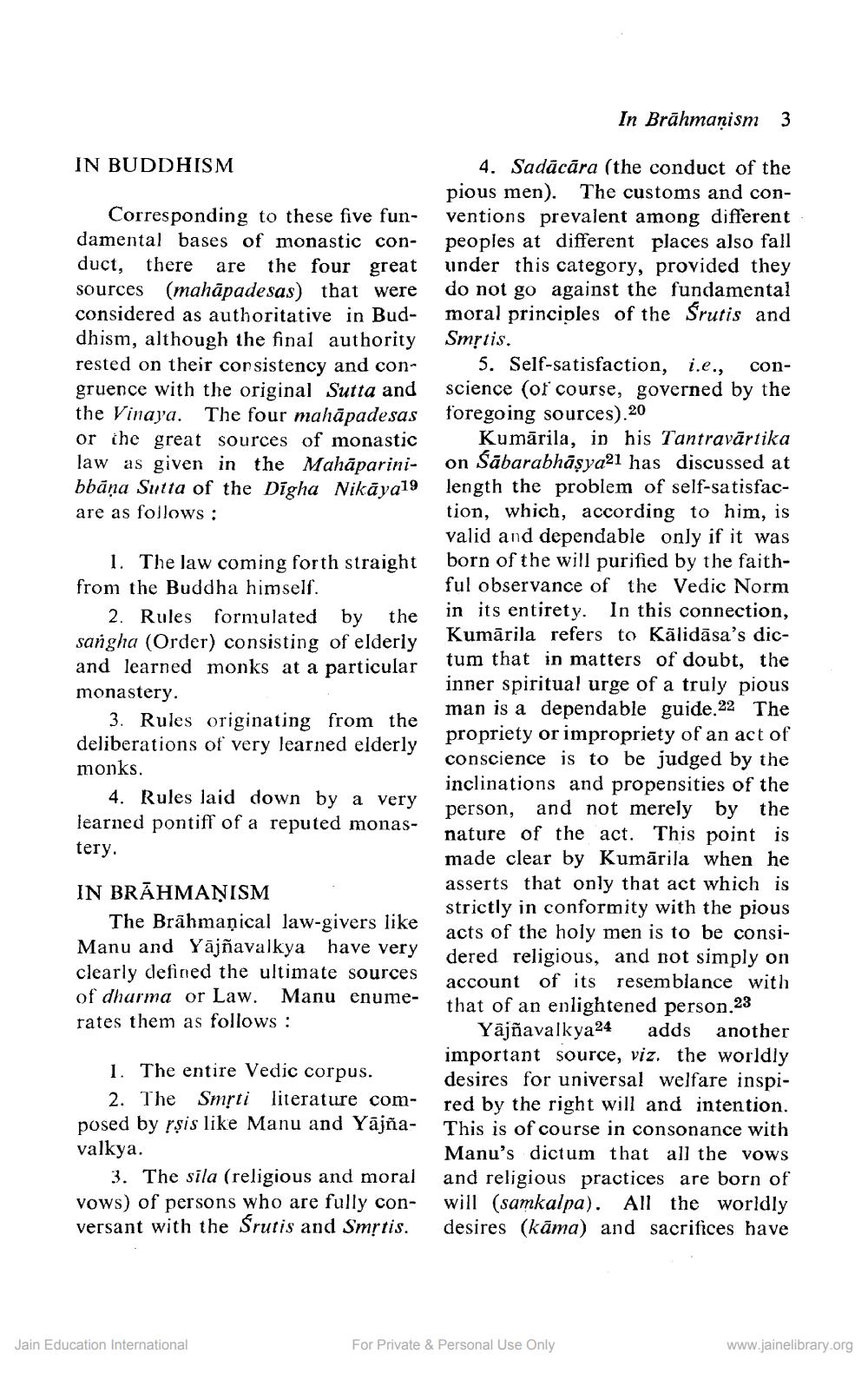________________
In Brāhmanism
3
IN BUDDHISM
4. Sadācāra (the conduct of the
pious men). The customs and conCorresponding to these five fun- ventions prevalent among different damental bases of monastic con- peoples at different places also fall duct, there are the four great under this category, provided they sources (mahāpadesas) that were do not go against the fundamental considered as authoritative in Bud- moral principles of the Srutis and dhism, although the final authority Smrtis. rested on their consistency and con- 5. Self-satisfaction, i.e., congruence with the original Sutta and science (of course, governed by the the Vinaya. The four mahāpadesas foregoing sources).20 or ihe great sources of monastic Kumārila, in his Tantravārtika law as given in the Mahaparini- on Šābarabhāşya21 has discussed at bbāņa Sutta of the Digha Nikāya19 length the problem of self-satisfacare as follows:
tion, which, according to him, is
valid and dependable only if it was 1. The law coming forth straight born of the will purified by the faithfrom the Buddha himself.
ful observance of the Vedic Norm 2. Rules formulated by the
in its entirety. In this connection, sangha (Order) consisting of elderly
Kumārila refers to Kālidāsa's dicand learned monks at a particular
tum that in matters of doubt, the monastery.
inner spiritual urge of a truly pious
man is a dependable guide.22 The 3. Rules originating from the deliberations of very learned elderly
propriety or impropriety of an act of monks.
conscience is to be judged by the
inclinations and propensities of the 4. Rules laid down by a very
person, and not merely by the learned pontiff of a reputed monas
nature of the act. This point is tery.
made clear by Kumārila when he IN BRAHMANISM
asserts that only that act which is
strictly in conformity with the pious The Brāhmaṇical law-givers like
acts of the holy men is to be consiManu and Yājñavalkya have very
dered religious, and not simply on clearly defined the ultimate sources
account of its resemblance with of dharma or Law. Manu enume
that of an enlightened person.23 rates them as follows:
Yājñavalkya24 adds another
important source, viz. the worldly 1. The entire Vedic corpus.
desires for universal welfare inspi2. The Smrti literature com- red by the right will and intention. posed by rșis like Manu and Yājña
This is of course in consonance with valkya.
Manu's dictum that all the vows 3. The sila (religious and moral and religious practices are born of vows) of persons who are fully con- will (samkalpa). All the worldly versant with the Srutis and Smrtis. desires (kāma) and sacrifices have
Jain Education International
For Private & Personal Use Only
www.jainelibrary.org




